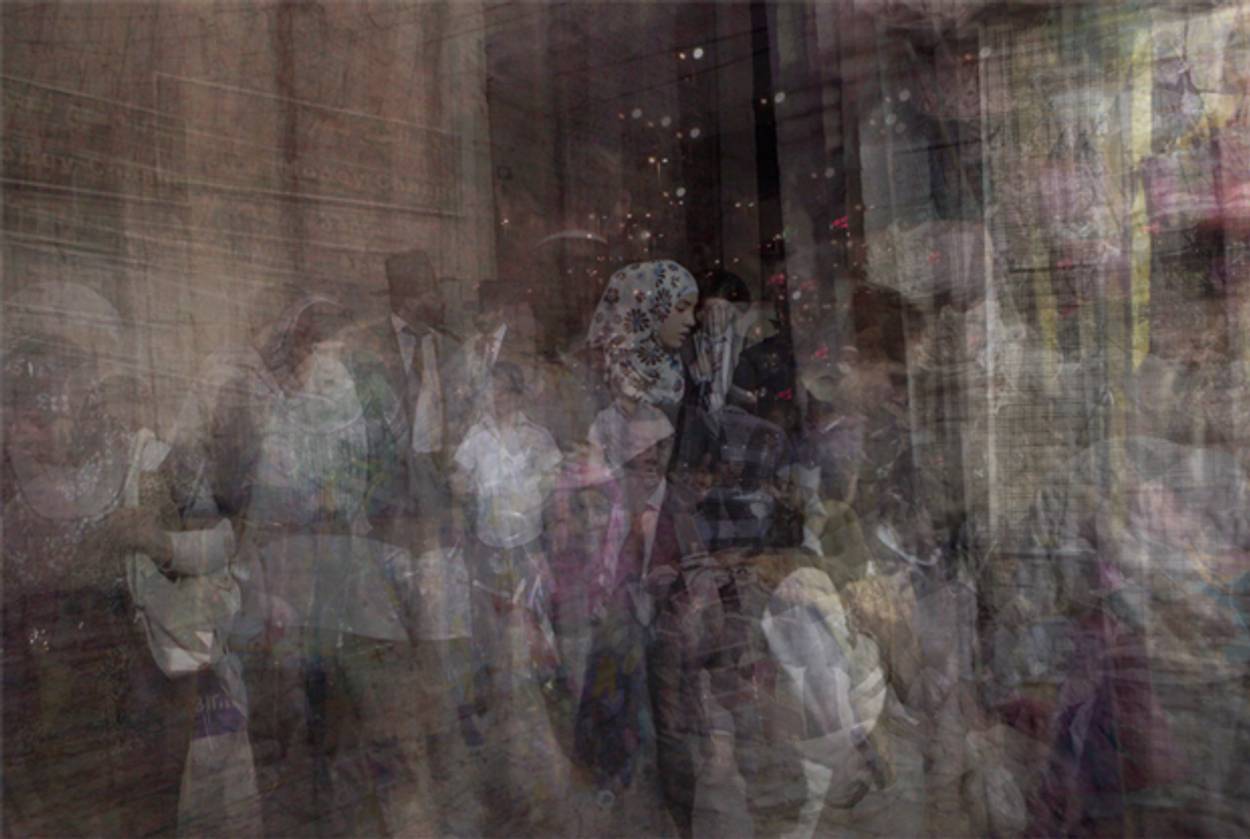Jerusalem Above / Jerusalem Below
Kitra Cahana’s photographic art and why it was a good match for S.Y. Agnon




The multilayered Jerusalem scene that accompanies our new English translation of S.Y. Agnon’s haunting story “Twofold”—Tablet’s Yom Kippur Reading for 5775—is by 27-year-old documentary and fine art photographer Kitra Cahana. Cahana’s work was previously featured in Tablet, for a story about Reb Nachman and the Breslov Hasidic pilgrimage to Uman. For other publications, like National Geographic magazine, where she is a contributing photographer, Cahana has also spent time with, among other insular social groups, the settlers of Gush Katif, a religious Jewish family with Down syndrome children in Safed, teens in Texas high schools, and members of a Venezuelan cult. Regardless of their specific contexts, her images share a similar sensitivity to underlying social and spiritual themes: of identity, holiness, and belonging. (Cahana—whose striking 2005 image of a young Israeli settler crying while pushing an Israeli border guard was one of several to appear since then on page A1 of the New York Times—is also the recipient of numerous awards and fellowships, including the prestigious 2013 ICP Young Photographer Award and a 2010 World Press Photo first place.)
The image we chose is from a new, in-progress project on Israel’s holy city. Like for much of her other work, the Jerusalem series is influenced by her grandmother, Alice Lok Cahana, a Holocaust survivor whose layered and textured art “weaves light and dark, the broken and the divine,” as Cahana has said elsewhere.
In an email to us, Cahana wrote:
The title of the series Jerusalem Above/Jerusalem Below comes from a mystical Kabbalistic idea of two Jerusalems: a divine city that hovers just above a very imperfect corporeal one. The two cities are understood to be mirror images of each other; what happens above is mirrored below, and vice-versa. It is the role of the mystic, or the spiritual yearner to bridge the division between the two, whether it be through deep meditation or by the act of good deeds that brings the Jerusalem of below closer to the unity and perfection of the ideal Jerusalem above. It is from this idea that I have started developing a series of photographs that tries to compact these two divided Jerusalems onto a singular two-dimensional plane. The work in progress is political insofar as it tries to remind those who stare into the layered images that the perfected face of Jerusalem can still be found (and created) in the world below—a face of harmony and unity, borderless, nationless, and without the many designs of the power-hungry.
To us, this echoed well the duality and heterodoxy at the heart of Agnon’s story:
If a person has two of the same thing, while taking one he thinks of the other, while taking the other he thinks of the first, and his heart is split and his mind confused. But I, in His blessed mercy, when I wrap myself in one tallit, my mind is at peace. But sometimes it seems as if I am standing on Yom Kippur at nightfall, as the gates are closing and the day’s soul is about to depart, and a day which passes cannot be returned.
Some of these same themes are present in another extraordinary body of work Cahana has been working on since July 15, 2011, the day her father, Rabbi Ronnie Cahana of Congregation Beth-El in Montreal, suffered a severe brain stem stroke that left him in an incomplete locked-in state. (For more on his slow but steady progress—he communicated at first through a combination of blinking and mouthing, and is now speaking and breathing on his own—visit rabbicahana.com.) The images of her father from that project, titled Father; Inchoate, Sub-Planetary, Protozoan, reflect the powerful confluence of her own artistic impulse and her father’s deep, and deeply moving, religiousness.
Related: Twofold